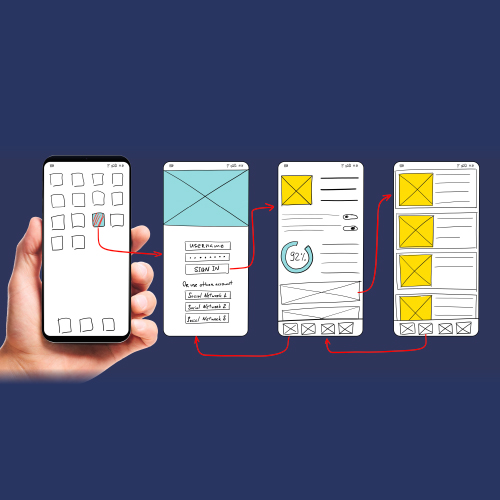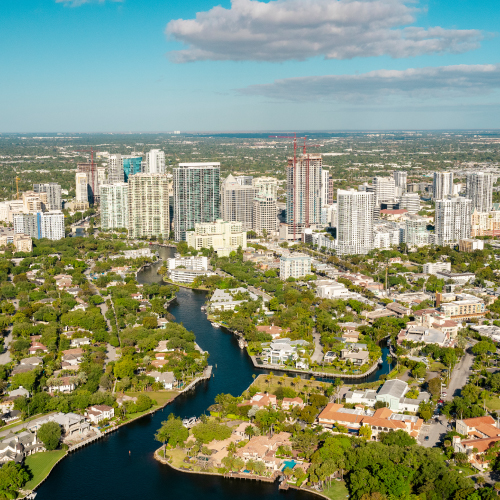The Ultimate Guide to Mobile Apps for Municipalities and Local Governments
Is your municipality or local government considering a mobile app for your local residents but don’t know where to start? Or do you wonder if a mobile app would benefit your town or region but are not sure how to evaluate the option?
Our guide is designed for the non-technical professionals. We update it regularly and the information here will help you understand as much as you need to know about mobile apps and working with mobile app developers. You will be able to confidently choose whether to have a mobile app developed and why, you will be able to choose a mobile app development company and you will be able to lead your team through the project to a successful mobile app launch.
If you are ready to get started today, let’s talk.
Establish Need
You don’t want to get left behind, but you also don’t want to commit budget to a technical project that doesn’t fulfill its goal. So how does a non-technical team decide on a technical project?
Think of a mobile app as a digital tool to resolve a current issue or enhance a specific service: Would it be for streamlining parking payments, enhancing communication with residents, or delivering real-time updates about local events? Once you’ve outlined these needs, you can gauge the potential value of the app by surveying your constituents, seeing how open they would be to using such a tool and how it might improve their interaction with local services. Finally, consider the potential return on investment in terms of both the financial aspect and improvement in citizen satisfaction. If these factors align positively, then a mobile app could be a beneficial addition to your municipality’s toolkit.
These articles will help answer many of the questions teams in municipalities and local governments have before they decide to move forward with a mobile app.
Kick off and Discovery
You’ve decided to go ahead with the mobile app. Does this mean everything is left to the development team? How do you ensure you get the mobile app your municipality needs without having done this before?
The first step in the process is the “Discovery Phase”, where your team and the development team work together to understand and outline the project’s specific goals and needs. This involves detailed discussions about the app’s purpose, the desired features, target audience, and how it should interface with existing systems, if any.
It’s like creating a roadmap for the app, detailing what it should do, how it should look, and how users will interact with it. This stage is crucial as it shapes the course of the app’s development, ensuring that the final product aligns with your municipality’s needs and expectations.

- What Your Mobile App Developer Wished You Knew
- So Your Organization Is Having a Mobile App Built and You’re in Charge
- Kick Things Off Right With Your Mobile App Developer
- What to ask for in your next Mobile App – top customer requests
- Step 1: Kicking Things Off Right for Municipalities and Local Governments
Data Gathering
Your development team needs a lot from you, but it is within your capabilities. What if you have to gather technical requirements – what even are technical requirements? We’ve got your back.
Technical requirements are the specifics about what your app needs to do and how it should function. They include aspects such as the types of data the app will handle, the necessary security protocols, how the app will interact with other systems, and any regulatory standards it must meet.
Data gathering involves collecting all this information, and more, to provide a clear picture of what the app needs to achieve technically. This might involve conversations with your IT department, or examining current workflows that the app is intended to digitize or streamline. Your role in this process is essential because you understand your municipality’s needs and operations best. Read these articles to help understand this point in the process.
Mobile App Design
If you have a designer or graphics department as part of your team, this step will probably be one they can handle. But if you don’t, you’ll still be asked for some direction and feedback at this point as your mobile app process continues to evolve.
In the Mobile App Design stage, the development team turns the needs and requirements into an actual design, which includes the app’s user interface (UI) and user experience (UX).
The UI encompasses how the app looks – its layout, color schemes, and typography, while the UX focuses on how users interact with the app – navigation, usability, and the overall user journey.
You’ll be involved in reviewing these design prototypes and giving feedback based on your understanding of your community’s preferences and needs. This stage is crucial as it ensures the app is not only functional but also user-friendly and appealing to its intended audience. These articles will explain what happens at this stage and what to expect.
Mobile App Development
The magic takes place at this stage, and can be one of the most mis-understood parts of the mobile app project.
During the Mobile App Development phase, the design and requirements laid out in the previous stages are transformed into a functional mobile app. Our developers code the app, setting up the necessary databases, servers, and APIs (the services that allow the app to communicate with other software) based on the technical requirements you provided.
It’s during this phase that features are implemented, tested, and adjusted as necessary, and though it might seem like a mysterious process, it’s essentially the act of building your app piece by piece according to the plans and designs that were previously agreed upon. Get clarity by reading our demystifying articles.
Mobile App Review
Your mobile app is in your hands. Your development team wants to know if it is approved. How do you know the mobile app you are looking at is what you asked for?
In the Mobile App Review stage, you assess whether the app meets all the goals, needs, and specifications you outlined in the discovery phase. Look at the app’s features and functionality, check if the design matches what you had agreed upon, and make sure the app delivers the intended user experience.
Be sure to gather feedback from a small group of end users who have not been involved in this process, like employees or a test group from your community so they can see it with fresh eyes.
Launching Your Mobile App
Here’s where we say, you can’t build it and they will download, you have to promote your app. Promote, promote, promote.
Promoting your mobile app effectively starts by identifying your target users within the municipality and understanding the best channels to reach them. This could involve utilizing local news outlets, social media platforms, email newsletters, and even physical signage around the community.
In your promotion, highlight the app’s key features, its benefits, and specifically how it will enhance the users’ interaction with local services, making their lives easier or more convenient. Don’t forget to provide clear instructions on where and how to download the app, as well as offering user support for any inquiries or difficulties they might face initially.
- Avoid a Mobile App Launch Disaster
- Four Strategies for Promoting Your Municipal Mobile App
- Future-Proof (With Training) Your Mobile App Investment for Municipalities and Local Governments
- How to market your mobile app – for Municipalities (download guide)
- Step 6: Launch Your Municipal or Local Government Mobile App
- Step 7: Training for Teams in Municipalities and Local Governments
- Step 8: Support for Municipalities and Local Governments

Our Client Spotlight
We’ve developed many mobile apps for municipalities and local governments all over North America. Have a look at some of our client stories.
In our “Client Spotlight”, we showcase the successful mobile app projects we’ve accomplished, detailing the specific challenges each municipality faced and how our app solutions helped overcome them. You can gain insights from these real-life examples on how mobile apps have enhanced local governance, improved community engagement, and streamlined public services. Each story provides a unique perspective, showing you how a thoughtfully designed mobile app can truly make a significant difference in your municipality’s operations and citizen satisfaction.






